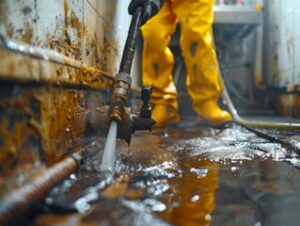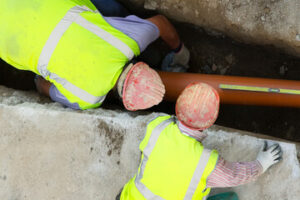The roof is one of the most important parts of your home. It protects you and your belongings from the elements, and it requires regular maintenance and repair to prevent damage.
The framework for a roof is made of either rafters or prefabricated trusses. Sheathing (often plywood or oriented strand board) is fastened to the rafters.

Roofing is an important investment for homeowners, and the materials used in roofing can communicate a home’s architectural style. Updating your roof offers an opportunity to add value and boost the resale price of your home. However, the initial cost of different materials needs to be considered when making this decision. Other factors include durability, waterproof protection, insulation needs and maintenance requirements.
There are many different roofing materials available, but a few key choices should be made before finalizing a choice:
Asphalt shingles are an affordable option with an average lifespan of 20 to 30 years. They are available in a variety of colors and styles that can match the style of any home. They offer great waterproofing and insulating properties. They also are fire-resistant and help to minimize the effects of heat on your air conditioning system.
Slate roofs are a more expensive roofing material but offer exceptional beauty. They have a natural look that can’t be replicated with other roofing materials, and are long-lasting, with some slate roofs still in place after hundreds of years. However, they are heavy and need extra support to prevent rot and damage.
Metal roofs are durable and offer superior resistance to water and heat, as well as a long life span. They have low-profile designs that can be installed on sloped roofs, and they come in a range of attractive finishes. Metal roofs are usually made of steel, with or without a coating of zinc and aluminium. They can have a flat or a pitched design, and their seams can be either soldered or sealed with a protective membrane.
Concrete tiles can be made of a variety of materials including clay, granite, terracotta and slate. They are heavier than shingle or slate roofs and require additional framing to support the weight. They can withstand high winds, but do not provide the same level of insulation as other roofing materials.
Rolled roofing is an inexpensive and practical option for low-slope or flat roofs. It consists of rolls of asphalt-impregnated material topped with mineral granules. It doesn’t offer much aesthetic appeal, but is a suitable roof for outbuildings like sheds and garages.
Installation
The roof of a home or business is essential to protecting the inside from rain, snow, sunlight, wind, and other elements. There are many different roofing materials available and the type used depends on a number of factors, including climate conditions and architectural style. There are also a variety of ways in which roofs can be constructed, including trusses, wood beams, and metal shingles. Regardless of the type or material, it is important to have proper installation to ensure long-lasting performance and avoid leaks.
Before any shingle or other roofing material can be installed, it is crucial that the construction team obtains all necessary permits. This includes both the general permit and any homeowner association or architectural review board permits that may be required. Once this is done, the construction process can begin.
Initially, the construction crew will need to set up their equipment and tools on your property. This includes putting up ladders, setting up generators, and doing everything else needed to prepare for the work to be completed. Once the crew is ready, they will start by removing any existing shingles or covering the entire roof with the new underlayment.
Once the underlayment is in place, the contractors will then begin installing the shingles. They will start in the center and work their way out, overlapping each row by six inches. The first shingle will be secured with cap nails, which are closer together than other nails, and then the rest of the shingles will be attached in a standard pattern. This will continue until the roof’s ridge is reached.
Next, the eaves will be protected with drip edge flashing and the valleys will be waterproofed with ice and water shield. This is an important step because these are the areas where water tends to collect and leak. The last area that will be covered is the chimney, wood stove pipes, and certain vents, which will be flashed with a more durable flashing material.
During the installation process, it is important that the construction crew takes all necessary safety precautions. This is especially true when working at heights. There are a number of resources available to help roofing companies implement fall prevention measures, including a mobile safety app, ladder safety tip sheets and infographics, toolbox talks, and videos and webinars.
Maintenance
The roof is the building’s main barrier against weather, and it requires special care to maintain its integrity and prevent water damage. A thorough inspection will reveal areas of potential deterioration that can be fixed before they become major problems, saving money in both the short term and long run. A professional Sika Sarnafil authorized applicator can be contracted to perform permanent repairs.
Surface maintenance procedures include removing debris, addressing traffic patterns, checking for penetrations and ensuring drains are unobstructed. Regular trimming of tree limbs should be done to ensure they don’t overhang flat roofs, as their sharp edges can puncture and damage membrane surfaces. It is also important to keep gutters clean to prevent drainage issues. De-icing salts should be used sparingly to avoid metal deterioration.
Leaks should be checked for in order to determine the source of the problem. Depending on the location of the leak, it may be necessary to inspect the entire structure for signs of moisture intrusion such as mold and mildew. It is also recommended to inspect trusses and beams for signs of stress, which could indicate a structural failure.
Housekeeping surveys should be conducted on most roof areas monthly. These should be assigned to mechanics who are responsible for daily preventive maintenance tasks or as part of a computerized work order system. These can be supplemented with additional surveys at critical times of the year, such as weekly during snowfalls. Corrective action or repair items should be accomplished reasonably soon after the survey is conducted. Delays will allow small isolated deficiencies to develop into major problems that are difficult and expensive to fix. This will be especially true for any roof area covered by a warranty.
Commercial
Roofers who specialize in commercial roofing have experience working on larger buildings and unique roof shapes. They have the skills to install various roofing materials, including EPDM, PVC, and TPO membranes. They also know to inspect a commercial roof and determine the best course of action for repair or replacement.
Commercial clients often have specific requests for the type of roof they want. This may include demanding that the roof be of a certain thickness or color and requiring it to have a specific warranty. Skujins says it’s important for commercial roofers to be service-oriented and to build relationships with clients. This can help them win jobs even when their bids are not the lowest.
Commercial roofers must also have the skills to work on high-rise buildings, which require special equipment for hoisting materials and workers to the roof’s surface. They also have the expertise to deal with weather-related problems that are more common in commercial buildings than in residential structures. This includes dealing with snow, rain, and other elements that impact the durability of the building’s roof. Hiring unqualified or inexperienced individuals to work on your commercial roof can result in subpar workmanship and a compromised structure that will need frequent repairs or need replacement prematurely.








